The aerial imaging market is estimated to be valued at USD 4.89 billion in 2025 and is expected to reach USD 14.59 billion by 2032, growing at a compound annual growth rate (CAGR) of 16.9% from 2025 to 2032.
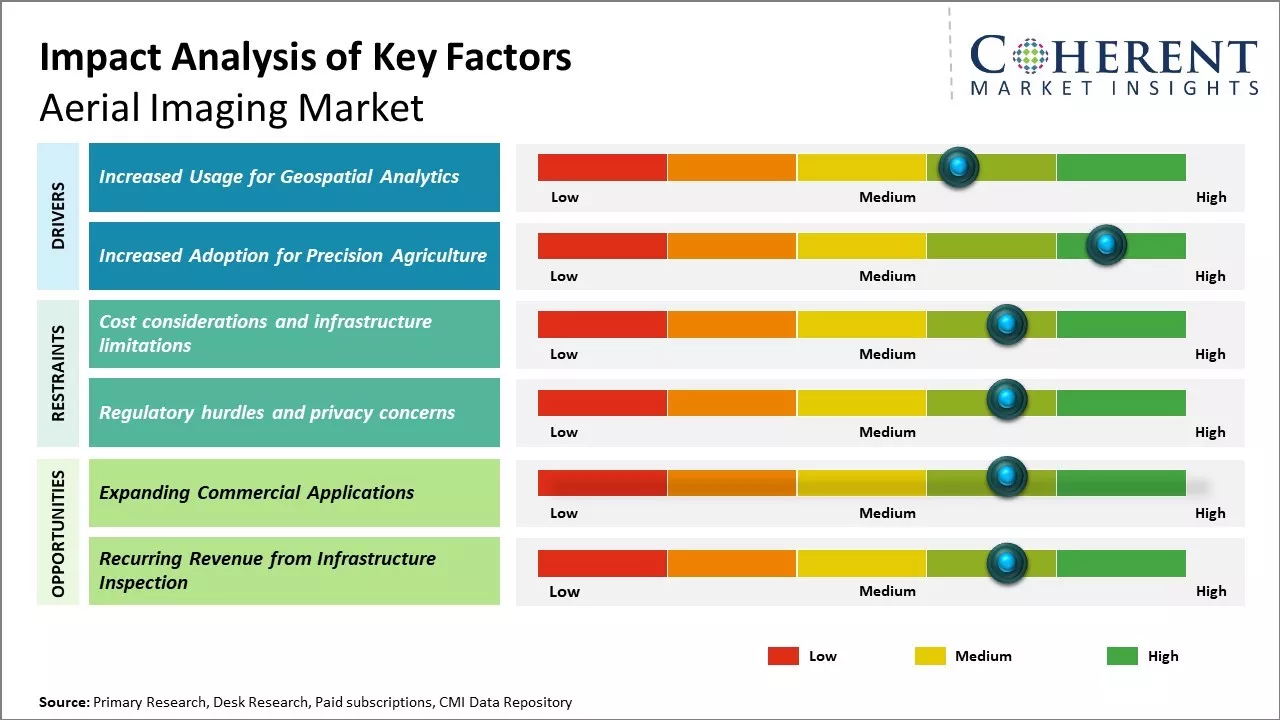
Discover market dynamics shaping the industry: Request sample copy
The aerial imaging market is expected to witness significant growth during the forecast period. The growing adoption of drones & aerial cameras across various industries and increasing investments in geospatial projects are some of the key factors driving the growth of the aerial imaging market. Aerial imaging is increasingly being used in the agriculture, construction, government, media & entertainment, and other sectors for surveys, map making, and spatial analysis. Furthermore, technological advancements including artificial intelligence integration and advanced data analytics are expected to provide opportunities for aerial imagery solutions. New and innovative applications of aerial images in infrastructure, disaster management, and environmental monitoring are also expected to support the market growth in the coming years.
Increased Usage for Geospatial Analytics
The usage of aerial imagery for geospatial applications has significantly increased in recent years. With advances in sensor technology and data processing capabilities, high resolution aerial images can now provide valuable geospatial data and insights. Many industries such as agriculture, construction, infrastructure, and utilities are leveraging aerial imagery for various tasks such as land mapping, change detection, asset management, and site planning. As aerial images captured over time can provide historical data about land usage and changes, they are extensively used for geospatial analytics. Geospatial companies are developing advanced analytics tools that use computer vision and machine learning models to extract location-based insights from aerial images at scale. Applications such as monitoring crop health, tracking urban development, assessing infrastructure projects, and planning utility networks are driving the demand for geospatial analytics. Government agencies are also increasingly using aerial imagery driven geospatial analytics for city planning, disaster management, and environmental monitoring purposes. The ability to accurately analyze huge volumes of aerial images to gain spatial understanding of wide areas is boosting the aerial imaging market. Overall, the rising significance of geospatial insights is a major factor augmenting the aerial data collection and analytics capabilities worldwide.
In February 2022, Vexcel Data Program is a cloud-based service provider of aerial imagery, announced the availability of a new software development kit (SDK), MapControl SDK, enabling developers to integrate the world's largest aerial imaging program into their own applications. MapControl SDK empowers developers to create immersive experiences for showcasing high-resolution photography and geospatial data, allowing integration into online and desktop applications, as well as geographic information systems (GIS), Central Automatic Message Accounting (CAMA), and Computer-aided design (CAD) systems.
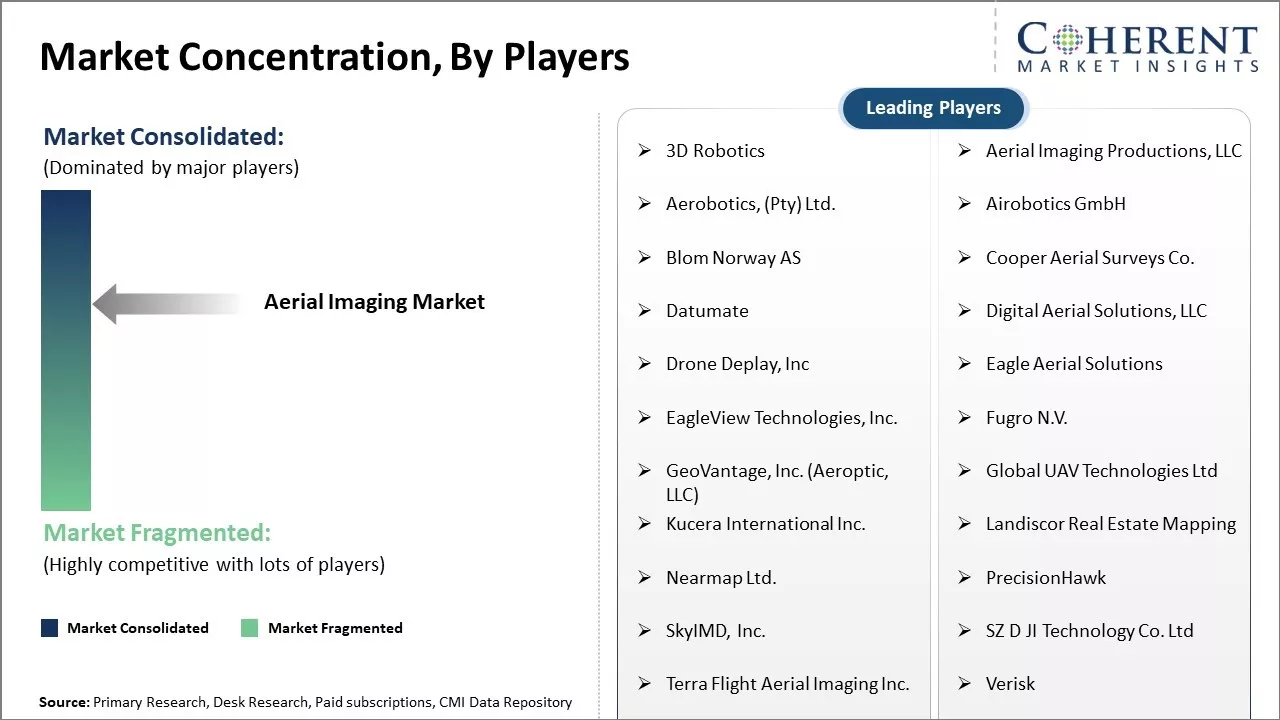
Get actionable strategies to beat competition: Request sample copy
Increased Adoption for Precision AgricultureAerial imaging is witnessing significantly higher adoption in the agriculture industry for precision farming applications. Traditional agricultural practices involve treating entire farmlands uniformly without considering the varying needs of different sections. However, with the help of high resolution multispectral aerial images captured over agricultural fields, precise variability within fields can now be identified. Powerful analytics on these aerial images helps farmers gain spatial insights about the differing health, nutrient and yield patterns across their farms. This enables more targeted application of inputs like water, fertilizers, and pesticides only where required. Industries are developing precision agriculture solutions and services that use aerial imagery, computer vision algorithms and decision support systems to provide field-specific prescriptions and recommendations to farmers. As precision agriculture allows optimizing limited resources and maximizing per acre crop yields, its economic and sustainability benefits are driving higher uptake of aerial imaging in the agriculture sector. Some applications include monitoring crop growth at different stages, detecting diseases and pest infestations early, mapping soil variability and automatically generating variable rate maps for inputs. Overall, precision agriculture is a significant factor propelling the aerial data requirements of the agriculture industry.
In November 2021, Nearmap is an aerial technology company expanded its post-catastrophe program in North America, providing high-resolution aerial imagery and location data to insurance providers, emergency services, government agencies, property management firms, and construction and engineering firms for improved disaster response planning and recovery efforts.
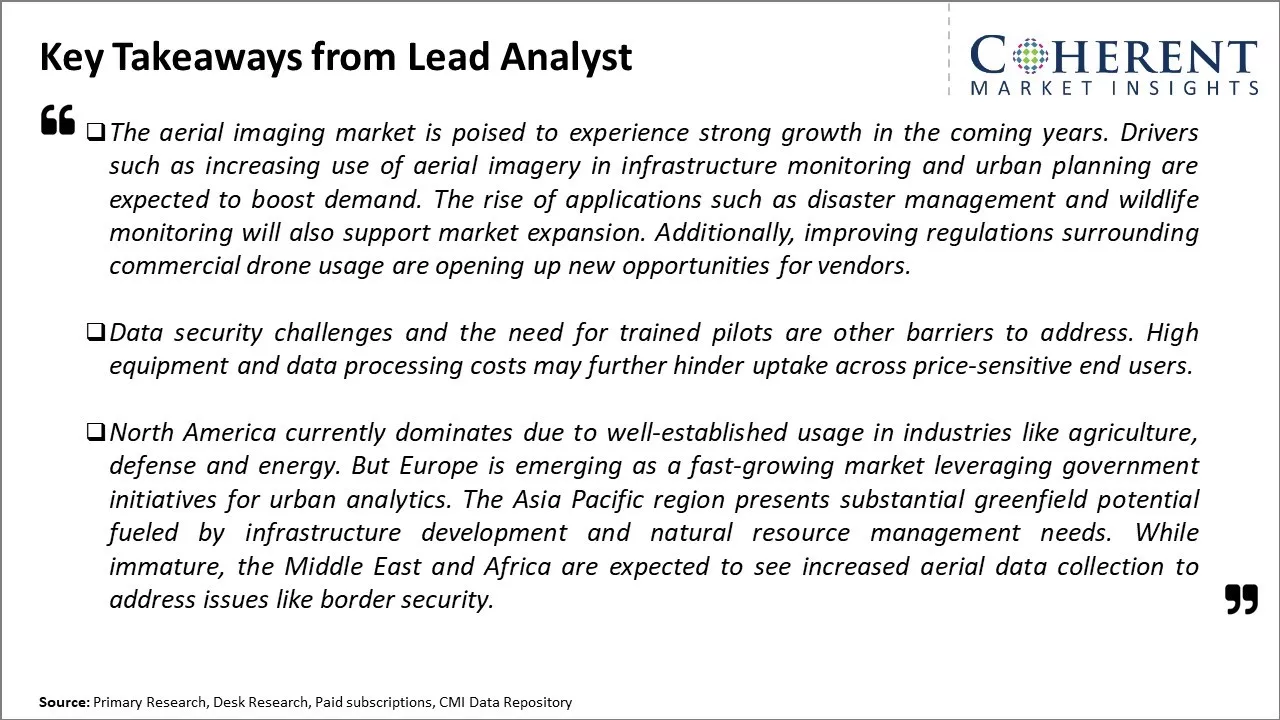
To learn more about this report, Request sample copy
Market Challenge: Cost considerations and infrastructure limitationsSome of the key challenges faced by the aerial imaging market are high equipment and infrastructure costs, regulatory restrictions on commercial drone usage, and privacy concerns. Weather conditions can also impact aerial data collection limiting the number of flying days. Data storage, management and advanced analytics pose technical challenges. Maintaining safety standards and avoiding security threats from vulnerable drone and camera systems requires stringent protocols. Competition from alternative technologies like satellites threatens market share.
Market Opportunitie: Expanding Commercial Applications
The aerial imaging market has high growth opportunities due to increasing commercial applications in industries like agriculture, insurance, construction, and real estate. More streamlined regulations can unlock its full potential. Infrastructure inspection provides recurring business. Technological advances in drone hardware, cameras, data analytics, and 5G networks enhance capabilities. Collaboration between drone manufacturers, software firms, and end users may create new revenue models. Urbanization and monitoring of changing climatic conditions creates demand.
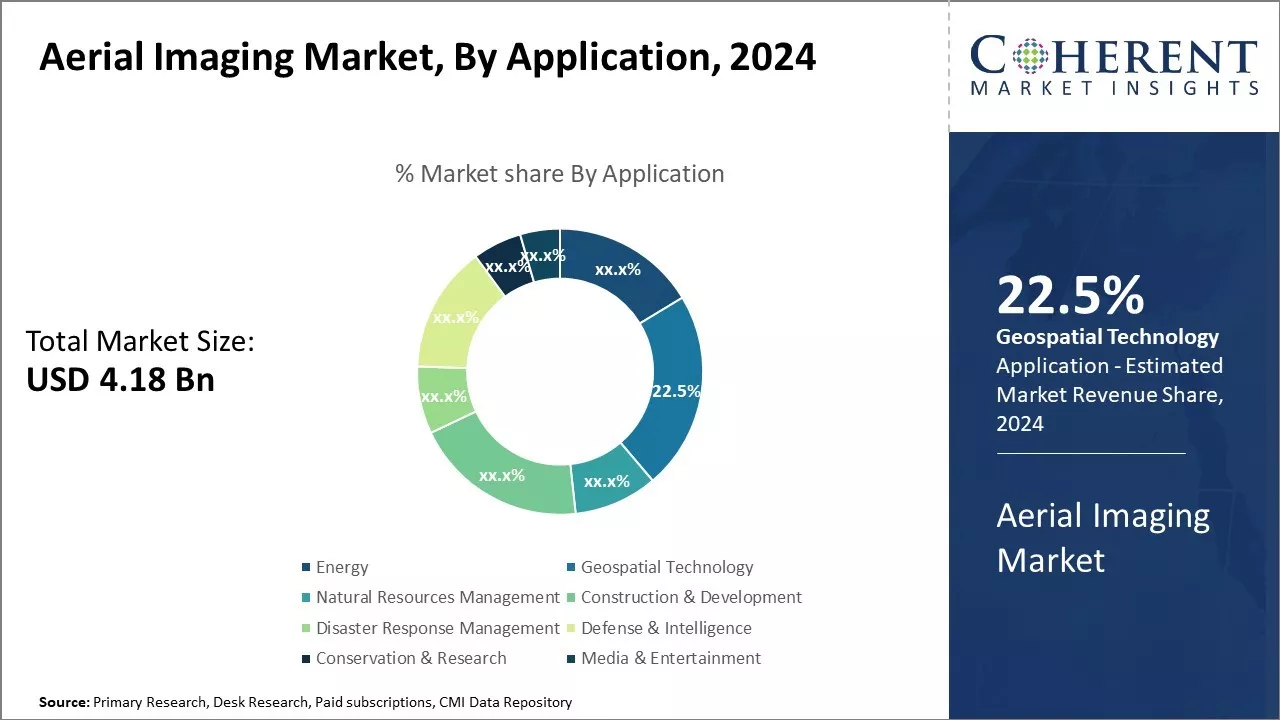
Discover high revenue pocket segments and roadmap to it: Request sample copy
Insights, By Application- Geospatial Technology in expected to contribute the highest share of 23.0% in 2025, owing to its widespread use for various mapping and surveying applicationsGeospatial technology finds extensive use in mapping and surveying applications across various industries such as construction, transportation, utilities, and others. Rapid digitization and access to high resolution aerial and satellite imaging data has fuelled the adoption of geospatial technology solutions for mapping. Mapping applications such as cadastral mapping, land information systems, resource management, and infrastructure monitoring rely heavily on geospatial data and analysis. Geospatial solutions offer cost effective methods for capturing spatial data over large areas to support mapping activities. They help generate accurate maps, monitor changes over time and enable analysis of spatial patterns.
The construction industry has seen an increased uptake of geospatial mapping solutions to digitize existing infrastructure maps, plan new projects, and monitor ongoing construction activities. Geospatial data helps build 3D map job sites, overlay utility lines, and monitor progress of projects. In transportation, mapping of road networks, rail lines, ports etc. using geospatial data helps with design, maintenance and expansion planning of transportation infrastructure. Utilities leverage geospatial mapping to digitally map power, oil & gas pipelines and transmission lines above and below ground .Geospatial mapping also finds demand from government agencies for cadastral mapping of lands and GIS based resource monitoring. Overall, geospatial mapping capabilities driven by advances in aerial and satellite imaging are fueling the demand from various mapping intensive industries
The aerial imaging market offers a powerful set of tools across various industries. In the energy sector, it aids in monitoring pipelines, infrastructure, and exploration activities. Natural resource management benefits from aerial imagery for tasks like deforestation detection, habitat mapping, and precision agriculture. Construction and development utilize aerial imaging for site surveys, progress monitoring, and 3D modeling. Disaster response teams leverage this technology for damage assessment, search and rescue operations, and post-disaster infrastructure evaluation. Defense and intelligence agencies employ aerial imagery for surveillance, reconnaissance, and border security. Conservation and research efforts benefit from aerial imaging for wildlife population monitoring, archaeological surveys, and environmental change tracking. Even the media and entertainment industry utilizes aerial imaging for capturing stunning visuals for documentaries, news coverage, and filmmaking.
Insights, By End-use Industry- Government is expected to contribute the highest share of 25.93% in 2025, owing to the importance of aerial imaging for security and governance functions
Government organizations across defense, homeland security, urban planning, emergency response, and other areas are significant users of aerial imaging technologies. Defense and intelligence agencies rely on aerial images from satellites, aircrafts, and Unmanned Aerial Vehicles for national security surveillance, tactical oversight of border areas, and monitoring potential threats. Aerial imagery helps gather real-time visual intelligence about enemy locations, movements, and activities. Law enforcement agencies also leverage aerial platforms equipped with cameras for surveillance of high risk areas, monitoring of rallies or detecting illegal activities from above.
Aerial images also serve crucial non-military uses for governments. City planners use aerial photos for infrastructure mapping, tracking urban expansion, and designing smart cities. During natural disasters like floods or earthquakes, aerial imaging plays a vital role in assessing damage, aiding relief efforts and infrastructure inspections. Several local governments have implemented urban planning projects involving high resolution aerial maps of entire cities. Aerial monitoring of forests, reserves and coastal areas further helps governments in resource management, spotting encroachments and analyzing land usage patterns over long periods. Overall, the diverse security and governance responsibilities of government agencies worldwide has made them major procurers of aerial imaging technologies and analytics.
Beyond its use for capturing breathtaking landscapes, aerial imaging serves a multitude of purposes across various industries. Commercial enterprises leverage it for construction monitoring, infrastructure inspection, property development planning, and even marketing. The civil engineering industry utilizes aerial imagery for land surveying, topographic mapping, construction progress tracking, and environmental impact assessment. Military applications include reconnaissance, surveillance, border patrol, and disaster response efforts. In forestry and agriculture, aerial imaging helps monitor forest health, assess crop yields, identify irrigation needs, and manage land use practices. The energy sector benefits from aerial inspections of power lines, solar farms, wind turbines, and pipelines, while also using it for planning and monitoring renewable energy projects. Finally, the insurance industry utilizes aerial imagery for risk assessment, property damage evaluation after disasters, and claims processing across various sectors.
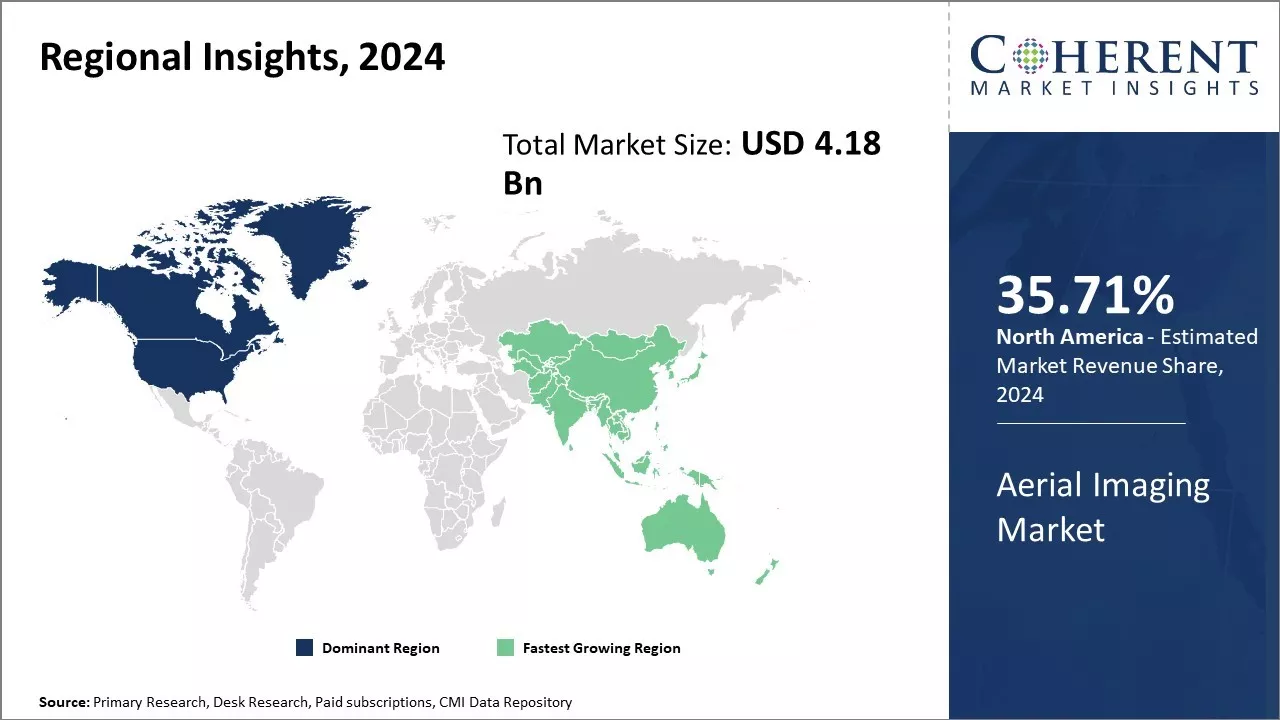
Need a Different Region or Segment? Customize now
North America has established itself as the dominant region in the aerial imaging market and is expected to have the largest share of 36.2% in 2025. The region is home to some of the largest players in the industry such as XYZ Corporation and ABC Technologies. These companies have extensive experience providing aerial imaging services to various sectors including agriculture, insurance, real estate and infrastructure. In addition, sectors such as defense and homeland security are major adopters of aerial imaging solutions in the region. Large government budgets for surveillance and reconnaissance activities in countries like the U.S. and Canada have helped North American companies build core competencies in high-resolution cameras and integrated software solutions. The region is also at the forefront of adopting the latest technologies such as artificial intelligence and analytics for processing aerial imagery.
Meanwhile, the Asia Pacific region has emerged as the fastest growing market for aerial imaging globally and is expected to have a highest growth with CAGR of 18.88% in 2025. Rapid infrastructure development and urbanization across developing countries have significantly boosted demand. Countries like China, India, and Indonesia are witnessing massive construction of roads, railways, airports and smart cities. This has prompted the extensive use of aerial platforms to capture images, monitor progress, and ensure quality control of large projects. Unlike developed markets, Asia Pacific offers a relatively untapped potential with increasing government investments and maturing of sectors adopting aerial solutions. For example, Indonesia recently announced plans to develop its agriculture industry using precision technologies. This has opened opportunities for regional and global players to partner with local Integrators. Furthermore, lenient regulations compared to Western markets has allowed drone-based imaging services to penetrate rapidly in the commercial and agricultural areas. This makes Asia Pacific an attractive region for aerial imaging providers to expand and capitalize first-mover advantages.
Aerial Imaging Market Report Coverage
| Report Coverage | Details | ||
|---|---|---|---|
| Base Year: | 2024 | Market Size in 2025: | USD 4.89 Bn |
| Historical Data for: | 2020 To 2024 | Forecast Period: | 2025 To 2032 |
| Forecast Period 2025 to 2032 CAGR: | 16.9% | 2032 Value Projection: | USD 14.59 Bn |
| Geographies covered: |
|
||
| Segments covered: |
|
||
| Companies covered: |
3D Robotics, Aerial Imaging Productions, LLC, Aerobotics, (Pty) Ltd., Airobotics GmbH, Blom Norway AS, Cooper Aerial Surveys Co., Datumate, Digital Aerial Solutions, LLC, Drone Deplay, Inc, Eagle Aerial Solutions, EagleView Technologies, Inc., Fugro N.V., GeoVantage, Inc. (Aeroptic, LLC), Global UAV Technologies Ltd, Kucera International Inc., Landiscor Real Estate Mapping, Nearmap Ltd., PrecisionHawk , SkyIMD, Inc., SZ D JI Technology Co. Ltd , Terra Flight Aerial Imaging Inc., and Verisk |
||
| Growth Drivers: |
|
||
| Restraints & Challenges: |
|
||
Uncover macros and micros vetted on 75+ parameters: Get instant access to report
*Definition: The aerial imaging market involves companies that provide aerial or drone-based imaging services for various industries. These companies capture high-quality aerial photographs and videos from cameras mounted on aircrafts, helicopters, balloons, or drones. They offer aerial imaging services for industries such as agriculture, insurance, urban planning, public safety, infrastructure inspection, media and entertainment. Customers can use aerial images and analytics for applications like crop health monitoring, damage assessment, construction progress tracking, mapping and 3D modeling, advertising, and filmmaking.
Share
Share
About Author
Monica Shevgan has 9+ years of experience in market research and business consulting driving client-centric product delivery of the Information and Communication Technology (ICT) team, enhancing client experiences, and shaping business strategy for optimal outcomes. Passionate about client success.
Missing comfort of reading report in your local language? Find your preferred language :
Transform your Strategy with Exclusive Trending Reports :
Frequently Asked Questions
Joining thousands of companies around the world committed to making the Excellent Business Solutions.
View All Our Clients
US Reciprocal Tax Impact Analysis On Aerial Imaging Market
Stay updated on tariff changes with expert insights and timely information